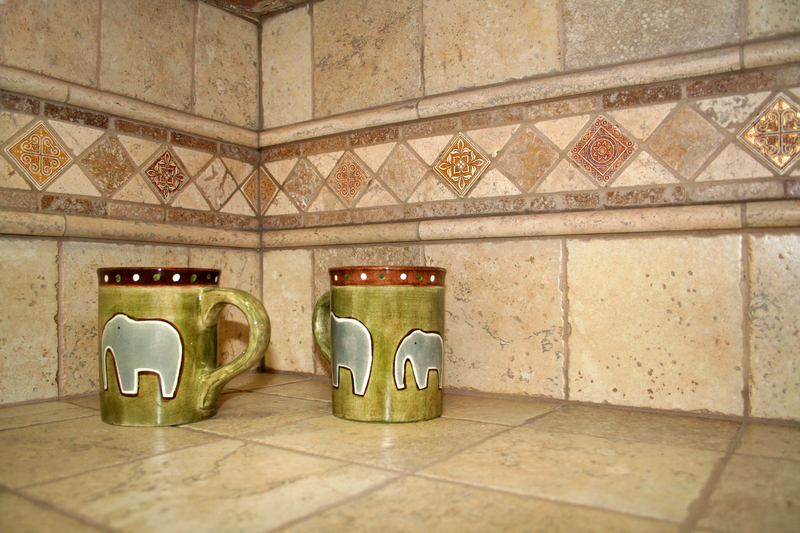Proven Techniques for Washing and Preserving Velvet Curtains
Posted on 02/06/2025
Proven Techniques for Washing and Preserving Velvet Curtains
Velvet curtains--with their rich texture and luxurious drape--instantly elevate any room's atmosphere. However, their beauty comes with a challenge: keeping them clean and well-preserved requires care and expertise. If you want to keep your velvet drapes looking flawless year after year, this comprehensive guide covers proven techniques for washing and preserving velvet curtains that will ensure their elegance stands the test of time.
Understanding Velvet: The Basics
Before diving into cleaning velvet curtains, it's crucial to grasp what makes velvet so unique. Velvet is a woven fabric distinguished by its short, dense pile, which gives it that signature soft feel and subtle sheen. Common velvet materials include:
- Cotton velvet: Durable but can be prone to crushing.
- Silk velvet: Extremely luxurious, but required delicate handling.
- Synthetic velvet (polyester, viscose, or nylon blends): More affordable and resilient.
The unique construction of velvet means that improper care can lead to matting, crushing, or permanent marks. Understanding what type of velvet curtain you own is the first step in preservation.

Preparation: Things to Do Before Washing Velvet Curtains
Read the Care Label
Always check the care label sewn into your velvet drapes. It might specify whether your curtains are suitable for dry cleaning, hand washing, or machine washing. If the label suggests "dry clean only," it's best to heed that advice especially for silk or antique velvet.
Test for Colorfastness
Before cleaning, perform a colorfastness test. Dampen a clean, white cloth with water and gently blot an inconspicuous area of your curtains. If color transfers, professional cleaning is recommended.
Remove Hardware
- Detach hooks, rings, and rods from your velvet curtains.
- Shake the fabric gently outside to remove dust and dirt.
Proven Washing Techniques for Velvet Curtains
Let's explore several safe methods for cleaning velvet drapes depending on the fabric type and care needs.
1. Dry Cleaning Velvet Curtains
Dry cleaning is the recommended method for most velvet curtains, especially those made from silk or antique fibers. Professional cleaners use specialized solvents that clean without soaking the fabric, maintaining the delicate pile and avoiding watermarks. If in doubt, consult a reputable local dry cleaner experienced with velvet textiles.
- Pros: Safest method, prevents shrinking or damage.
- Cons: Costlier than at-home options.
2. Vacuuming Velvet Drapes
For routine maintenance, regularly vacuum your velvet curtains to remove dust and allergens. Use a handheld vacuum or an attachment with soft bristles, and always follow the direction of the pile.
Steps:
- Attach a clean, soft-bristled upholstery brush or nozzle to your vacuum.
- Work from top to bottom, gently brushing in the direction of the nap.
- For stubborn lint or hair, use a lint roller.
Tip: Vacuuming is highly effective in extending the time between deep cleanings and helps maintain the curtains' natural sheen.
3. Spot Cleaning Velvet Curtains
If you notice small stains or marks on your velvet drapes, spot cleaning is a delicate yet practical approach:
- Mix lukewarm water with a small amount of mild liquid detergent (preferably one made for delicates).
- Dip a clean, white cloth into the solution. Wring out excess water.
- Blot the stained area gently--never rub--to lift debris without damaging the pile.
- Follow by blotting with a cloth dampened in fresh, clean water to remove any soap residue.
- Allow to air dry.
To revive the pile after drying, brush gently with a soft clothing brush in the direction of the nap.
4. Hand Washing Velvet Curtains
Cotton and synthetic velvets can often be hand washed, while silk or heavily embellished velvet should not be submerged in water. If the care tag allows for hand washing:
- Fill a large tub with lukewarm water and a small amount of gentle, non-bleach detergent.
- Submerge the curtains and gently agitate the fabric with your hands for a few minutes.
- Rinse thoroughly with cold water to remove soap.
- Never wring out velvet. Instead, press out water by laying the fabric flat between two towels and gently pressing.
Dry flat or hang to air dry (more on this below), ensuring the nap is not crushed in the process.
5. Machine Washing Velvet Curtains
Some modern synthetic velvet draperies may be labeled as machine washable. If so, proceed with extreme care:
- Use the gentle or delicate cycle, with cold water only.
- Place the curtains inside a laundry bag or pillowcase to prevent friction and snagging.
- Avoid fabric softener and bleach.
- After washing, shake out wrinkles and lay flat or hang to dry.
Warning: Even with machine-washable velvet, excessive agitation or heat can cause permanent damage. When in doubt, wash by hand or consult professionals.
Drying Velvet Drapes: Best Practices
Proper drying is as vital as washing when dealing with velvet curtains. Drying mistakes often lead to wrinkling, shrinkage, or a ruined nap.
- Never tumble dry velvet fabric. High heat destroys pile and can shrink fibers.
- Allow curtains to air dry flat on a large towel or hang on a well-padded rod, ensuring they are not folded or pinched.
- If hanging, use wide clips or a curtain rod to distribute weight and avoid creases.
- Ensure the fabric dries in a well-ventilated area, away from direct sunlight to prevent fading.
Once dry, steam curtains (not iron) to restore their luxurious finish.
Preserving Velvet Curtains for Long-Term Beauty
Preservation techniques safeguard your velvet drapes not just from dirt, but also from the effects of daily wear, fading, and environmental factors.
1. Avoid Direct Sunlight
Continuous exposure to sunlight can cause velvet's vivid colors to fade. Use linings, blinds, or sheer panels behind your curtains, or change curtain placement periodically to even out light exposure.
2. Regular Brushing
Once a week, gently brush your velvet curtains with a soft clothing brush in the direction of the pile to keep them glossy and free from lint.
3. Dealing with Crushed Nap
If your velvet drapes develop crushed areas:
- Use a handheld garment steamer, holding it several inches away from the fabric while gently brushing the crushed area with a soft brush.
- Never iron velvet directly, as it can flatten and damage the pile. If ironing is absolutely necessary, use a velvet board and the lowest setting, placing a clean cloth between the iron and the fabric.
4. Protect Against Moisture and Humidity
Velvet is susceptible to mildew and mold in humid conditions. Ensure your home is well-ventilated and consider using a dehumidifier in damp climates.
5. Proper Storage
When storing velvet curtains:
- Ensure they are completely dry.
- Store in a cool, dry space, away from direct sunlight.
- Fold with acid-free tissue paper between layers to prevent crushing.
- Avoid placing heavy objects atop stored curtains.
Common Mistakes to Avoid When Cleaning Velvet Curtains
- Not reading and following manufacturer's care instructions.
- Using harsh chemicals or bleach.
- Over-wetting during spot cleaning.
- Attempting to iron directly on velvet fabric.
- Tumble drying or exposing to direct heat.
- Forgetting to test for colorfastness.

FAQs: Caring for Velvet Curtains
Can I steam clean velvet curtains?
Yes, gentle steaming is ideal for removing wrinkles and refreshing the nap. Use a handheld steamer and keep it a few inches from the fabric, brushing gently with a soft brush.
How often should I wash velvet curtains?
With proper maintenance, most velvet drapes only need deep cleaning every 1-2 years. Frequent vacuuming and prompt spot treatment will reduce the need for washing.
Is it safe to use stain removers on velvet?
Only use mild, velvet-appropriate products or diluted detergent solutions. Avoid commercial stain removers containing bleach or harsh solvents unless clearly labeled safe for velvet.
Can I remove pet hair from velvet curtains?
Yes. Use a lint roller or vacuum with a soft brush attachment, working in the direction of the pile.
Conclusion: Maintain Velvet Curtain Beauty for Years to Come
Velvet curtains bring timeless sophistication to any home, but their allure comes with special care requirements. By following these proven techniques for washing and preserving velvet curtains--from gentle washing methods to routine maintenance and correct storage--you can ensure your luxurious drapes remain in pristine condition for many years.
Remember: Treat your velvet curtains with patience and gentleness. When in doubt, consult professionals to avoid costly mistakes. Your efforts will be rewarded every time you step into a room glowing with the rich splendor of well-cared-for velvet drapes.
Have you tried these techniques? Share your experiences or favorite tips for velvet curtain care in the comments below!




